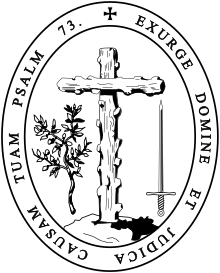 |
| 2015--Upper Payette Lake |
Our trip to visit our youngest in Arizona over the holidays more or less cemented the deal. Out of fairness, we are balancing Arizona over the holidays with flying to Dayton next week to visit our oldest. Or so we say. Really, it's an excuse to see our nearly six month old granddaughter.
A last hurrah, because afterwards there's more than enough work left undone around the homestead...what with adding rock (clearing the pasture) into the gabion stone wall, discing up a vegetable garden (which hasn't been used in nearly twenty years), replacing pine seedlings that succumbed to ground squirrels, finishing the greenhouse. So it goes. There's no place like home.
Even so, in its own right, we live in an interesting region here. West of the Clearwater and east of the Snake. Perhaps we take much for granted, giving short shrift locally. The grass is always greener so to speak.
Historically, or archeologically, the area of Cottonwood, where we live, is a rather long-inhabited place. Truth be told, as habitations go, it is easily on the scale of the Mesolithic sites in Scotland (e.g. the Oronsay shell & hazelnut middens which we have yet to visit). Actually, it is older still--one of the oldest archeological sites in the whole of North America. It dates to 16,000 years before present...to the Late Upper Paleolithic. It is the oldest radio-carbon dated record of the human presence in North America. Indeed, the first samples tested were assumed to be in error. Subsequent radio-carbon dates were coming back consistently as 16,000 years BP.
 |
| Charred hazelnuts in Mesolithic midden on Colonsay; source digiscotland |
Located within a terrace at the confluence of Rock Creek and the Lower Salmon (only 11 miles south of Cottonwood), the Cooper's Ferry site was found to contain 189 stone artifacts (projectile points, blades, flake tools and bi-faced fragments); plus charcoal and many bone fragments of medium to large-bodied animals. There was also evidence of a hearth, dug pits and a food processing station, suggesting domestic occupation...some 16,000 years ago.
Thus, Cooper's Ferry contradicts the "Clovis first" occupation theory which had assumed that the Clovis people were the first to migrate into North America. It turns out they weren't...not by a couple thousand years. Cooper's Ferry also challenges the theory that an ice-free corridor opened up to North America which then permitted migration. True, since Cooper's Ferry finds in fact predate the ice-free corridor by two thousand years.
The Cooper's Ferry stone implements (specifically stemmed projectile points) are very similar, if not identical, to those that have been found in northern Japan dating ~21,400 to 16,200 BP (Late Upper Paleolithic).
 |
| 2015--west view on The W |
Following the Cooper's Ferry dig, a fledgling consensus is forming suggesting humans may have arrived in North America by sea, quite possibly from northern Japan, and then breached the continent's interior by traveling up inland rivers. The first major northwest river on the continent that would be encountered from northern Japan happens to be the Columbia, of which the Snake and Salmon are major tributaries. It is the "first off ramp" to get south of the ice.
The Cooper's Ferry site has been a decade in the digging by Oregon State University. It has now wrapped up, with another decade or more in analyzing what has been uncovered thus far. Traditionally, Cooper's Ferry is an ancient village known to the Nez Perce as Nipéhe. On former Nez Perce land, now under federal management by BLM, oral tradition has it that Nipéhe was established by a couple after a flood destroyed their previous home. Or rather, an avalanche did. A young boy and girl survived to establish Nipéhe, the ancient settlement.
 |
| 2012--west view on The W |
The tale alludes to the importance (or treacherousness) of snow and ice 16,000 years ago. With a grain of salt (because a great deal of time separates the people originally involved from the present day), according to Nakia Williamson-Cloud, Nez Perce director of cultural resources, “Our stories already tell us how long we’ve been here. This only reaffirms that. This is not just something that happened 16,000
years ago. It’s something that is still important to us today.”
As for pining after Scotland and its ancient standing stones and circles, that must wait another year. That said, this proves one need not travel quite so far to see history. Sometimes it's in our own back yard.
 |
| 2019--east view from The W |
.jpg)
.jpg)
.jpg)
.jpg)
.jpg)
.jpg)


















.jpg)

.jpg)













